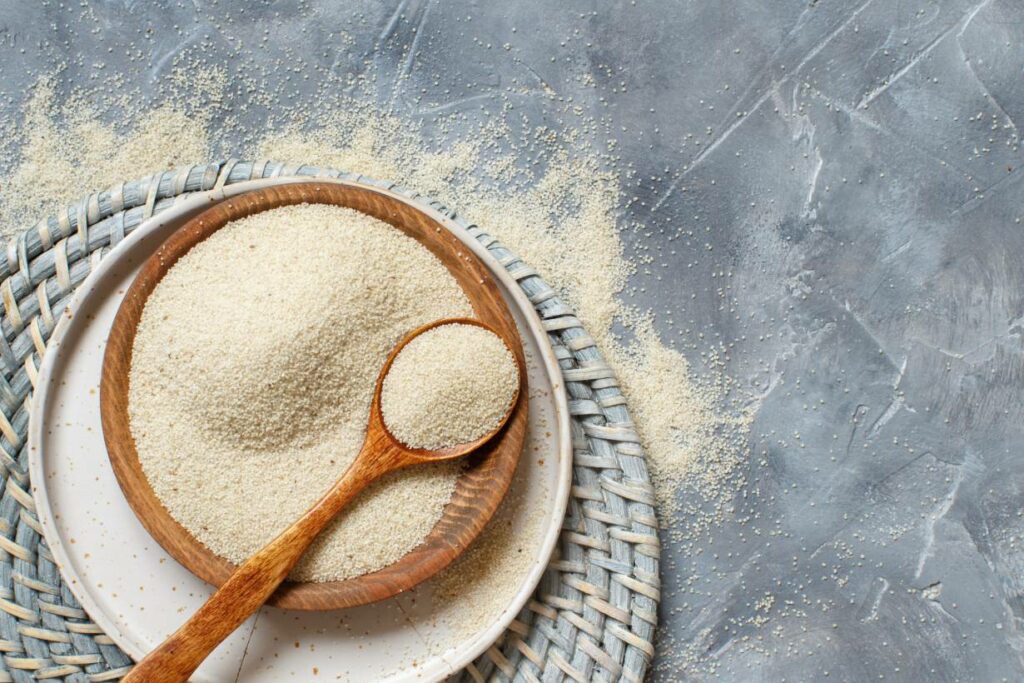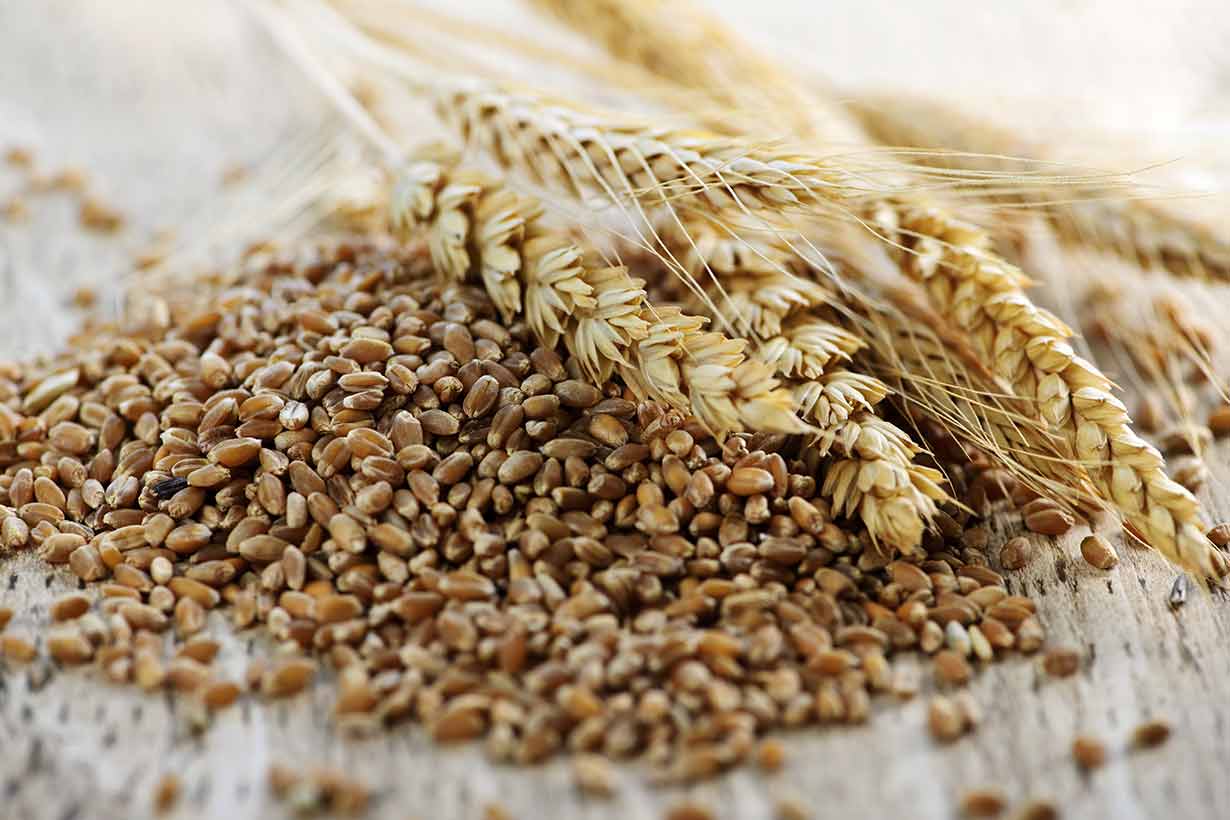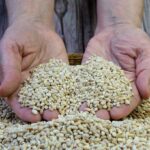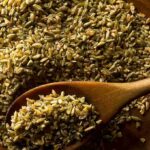Fonio is a little-known whole grain that has become increasingly popular over recent years.
It has even been marketed as a “superfood” by mainstream media, but is that term accurate?
This article provides a complete guide to fonio and its potential nutritional benefits.
Table of contents
What Is Fonio?

Fonio, also known as ‘acha’ and ‘hungry rice,’ is a whole grain native to Western Africa.
There are two species of fonio: black and white.
This article will focus on white fonio, the most common variety known scientifically as ‘Digitaria exilis.’
Botanically, fonio is a type of small-grained millet (1).
The appearance of fonio looks somewhat like couscous; as in the above image, a bowl contains thousands of tiny white seeds.
It has an earthy and light nutty taste and a texture similar to couscous when cooked.
Fonio has seen rapid increases in popularity over the past decade. On this note, global production volume more than doubled between 2006 and 2020, from 352.96K to 721.40K metric tons (2).
In addition to being eaten as couscous or porridge, fonio also has uses in baking and beer-making (3).
Unlike many whole grains, fonio is a gluten-free grain (4).
Benefits of Fonio
As previously mentioned, we can sometimes see the media refer to fonio as a ‘superfood,’ but this is mainly just hype.
However, fonio does have some nutritional benefits.
A Gluten-Free Whole Grain
Firstly, many common whole grains contain gluten and are thus unsuitable for individuals with celiac disease.
Some examples of gluten-containing whole grains include wheat, barley, and rye. While oats are gluten-free, they can be susceptible to cross-contamination with gluten-containing grains (5, 6, 7, 8).
With this in mind, fonio can be a versatile whole grain for people looking for gluten-free options.
It is possible to consume fonio as couscous or porridge or as an added ingredient in various recipes.
Also, fonio can be a primary ingredient in commercial gluten-free beer, bread, and other bakery products (9).
Other popular gluten-free whole grains include amaranth, buckwheat, corn (including popcorn), quinoa, teff, and wild rice.
Moderate Source of Protein
Studies that have analyzed the composition of fonio show that it contains a moderate amount of protein.
Based on twelve samples of fonio, the average protein content was 8.5 grams on a per-100-gram basis (10).
While this does not match the protein composition of foods like meat, seafood, or legumes, it is still a good protein source.
Low Glycemic Index
The glycemic index informs us how quickly we can expect a particular food (by itself) to raise blood sugar levels (11).
This index is given as a number between 1 and 100. Lower scores mean that the food raises blood sugar slowly, whereas a score of 100 is equivalent to the effect of pure glucose.
Regarding fonio, a study involving seventeen participants tested its glycemic index.
Among these participants, ten had type 2 diabetes, and seven were otherwise healthy.
In the participants with type 2 diabetes, the glycemic index of fonio was 49. For the other ten participants, the glycemic index of fonio was 35 (12).
A glycemic index of 35-49 compares favorably to some other grain products, such as wholewheat bread (74), porridge (55), brown rice (68), white bread (75), and white rice (73) (11).
High In Dietary Fiber
One benefit of fonio is that a significant proportion of its carbohydrate content comes from fiber.
Across twelve different samples of fonio, the mean fiber content was 18.2 grams per 100 grams (10).
The FDA’s recommended daily value for fiber, based on a 2000-calorie diet, is 28 grams per day. However, the average fiber intake in the United States is only around 15 grams daily (11,12).
Thus, fonio could contribute to increased fiber consumption.
Systematic reviews of extensive observational studies suggest that higher fiber intake is inversely associated with cardiovascular risk and all-cause mortality (13, 14, 15, 16).
Easy To Grow
This is not a nutritional benefit, but fonio can also help provide food for countries with food insecurity issues.
This is because fonio is extremely easy to grow, even in poor-quality soils, and it can survive harsh conditions such as drought (17).
Additionally, fonio grows very quickly and can reach maturity in as little as 70-90 days, which compares favorably to other grains (18).
For these reasons, mainstream media outlets, such as Bloomberg, have covered the potential for fonio to “help ease world hunger” (19).
What Nutrients Does Fonio Provide?
Fonio does not have a nutritional data entry in the USDA database or other major nutrition databases.
However, from studies that have analyzed the composition of numerous fonio samples, we can observe many of fonio’s nutritional values.
The nutritional values in this article have been derived from three data sources:
- Dembele et al. (2012): this study, based on twelve fonio samples, provides data on fonio’s calorie, carbohydrate, fiber, fat, protein, iron, and zinc content.
- Barikmo et al. (2007): based on 104 samples of fonio, this study provides nutritional data on the grain’s thiamin, riboflavin, and niacin content.
- D.W Irving & I.A Jideani. (2007): this study was based on a single sample of fonio and provided additional data on the calcium, potassium, sodium, and magnesium content.
Nutrition Facts
The following nutritional values are per 100 grams (raw) of fonio.
Daily values have been calculated using the FDA’s published daily values.
| Nutrient | Amount | % Daily Value |
|---|---|---|
| Calories | 335 kcal | |
| Carbohydrates | 66.1 g | 24.0% DV |
| Fiber | 18.2 g | 65% DV |
| Fat | 4.2 g | 5.4% DV |
| Protein | 8.5 g | 17.0% DV |
Vitamins
- Thiamin (B1): 0.17 mg (14.2% DV)
- Riboflavin (B2): 0.22 mg (16.9% DV)
- Niacin (B3): 1.15 mg (7.2% DV)
Minerals
- Calcium: 30 mg (2.3% DV)
- Potassium: 260 mg (5.5% DV)
- Iron: 34.6 mg (191.2% DV)
- Sodium: 30 mg (1.3% DV)
- Magnesium: 70 mg (16.7% DV)
- Zinc: 3.2 mg (29.1% DV)
It should also be noted that fonio likely contains more vitamins and minerals than listed here. However, there has been limited research investigating its complete nutritional composition.
Other
Aside from vitamins and minerals, fonio also contains several phytonutrients.
These include caffeic acid, chlorogenic acid, ferulic acid, gallic acid, protocatechuic acid, p-coumaric acid, salicylic acid, sinapic acid, syringic acid, and vanillic acid (20).
Phytonutrients are bioactive compounds found in plant foods capable of exerting effects on the body.
Downsides
Two downsides of fonio are its expense (in Western countries) and its phytic acid content.
More Expensive Than Common Grains
While fonio is relatively cheap and abundant where it is grown, it is significantly more expensive in foreign markets.
For instance, the cost can be five times (or higher) more than other grains like oats and barley.
Because of the marketing, people may be willing to pay higher prices; fonio has been positioned as a “superfood” by sellers and media stories.
While fonio has some nutritional benefits, it doesn’t offer anything unique that other whole grains don’t.
Phytic Acid Content
Another potential drawback of fonio is its relatively high phytic acid (phytate) content.
The mean phytate content from twelve samples of fonio was 515 mg per 100 grams, which is relatively high (10).
Phytate has some beneficial effects on the body, so it is not something we should outright avoid. However, it does also have ‘antinutrient’ properties (21).
In other words, it can bind to minerals such as iron and zinc and reduce their bioavailability, meaning we absorb less of the nutrient (22, 23).
How To Use Fonio
There are many different ways to use fonio.
Some ways to use fonio include:
- Couscous: fonio can be cooked and eaten similarly to regular couscous.
- Porridge: savory and sweet fonio porridges are traditional dishes in West Africa. Making it follows a similar process to porridge made with oats.
- For baking purposes: fonio grains can be ground down into flour and then used for gluten-free baking. It is easy to do this in a blender – add the whole grains and blend. There are numerous recipes online for some ideas on what to do with fonio flour.
- In stews and stir-fries: fonio can be added to stews and stir-fries to thicken the dish and increase its nutritional value.
Where To Buy
Depending on the country and place, finding fonio can be more difficult than other grains.
Some larger grocery stores may stock it, and Whole Foods Market stores sell it.
It is also easy to find for sale online (disclosure: affiliate link).
Common Questions
To summarize this guide to fonio, here are some answers to frequently asked questions.
Fonio is slightly more than 8% protein by weight, similar to other whole grains. Therefore, we can class it as a moderate protein source. However, it should be paired with protein-rich food such as fish, legumes, meat, or milk to get enough protein in a meal.
Fonio contains a similar carbohydrate content to other whole grains, with 66 grams on a per-100-gram basis. A significant amount of this carbohydrate content comes from dietary fiber.
No, folio does not contain gluten and is an excellent whole-grain option for individuals following a gluten-free diet.
Fonio has a mild taste and no strong flavor of its own. The best way to describe the flavor would be earthy with slightly nutty tones. However, fonio is also very absorbent and absorbs flavors from dishes. It has a soft and somewhat chewy texture.
Any time we see a food referred to as a “superfood,” we should be cautious. ‘Superfood’ tags are usually just part of marketing to generate hype. Although fonio does have some beneficial nutritional properties, so do many other foods. To put it another way: fonio is a versatile and nutrient-rich ingredient, but it doesn’t offer anything unique.
Final Thoughts
As fonio increases in popularity, further research into its nutritional composition should continue.
For now, we know that this gluten-free whole grain provides a good amount of protein, fiber, B vitamins, iron, and magnesium. It is also a versatile ingredient that is suitable for individuals on a gluten-free diet.
However, it is best to view the ‘superfood’ marketing this grain receives with a pinch of salt.
There are cheaper alternatives that offer just as much nutritionally.








